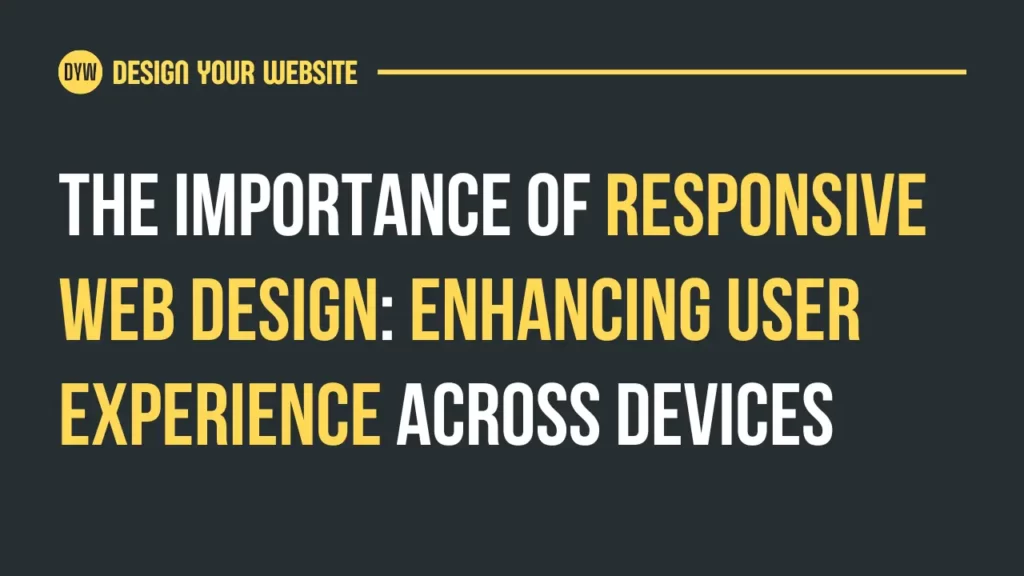Right Color Scheme for Your Website
In the world of web design, aesthetics play a pivotal role in capturing and retaining user attention. One of the most influential aspects of design is the color scheme you choose for your website. Colors have the power to evoke emotions, convey messages, and influence user behavior. Selecting the right color scheme for your website is not just about visual appeal; it’s about aligning with your brand identity and creating a positive user experience. In this comprehensive guide, we’ll delve into the intricate process of choosing the perfect color palette for your website.
Understanding Color Psychology: The Emotion Behind Colors
Colors hold significant psychological associations that can impact how users perceive your website. Warm colors like red, orange, and yellow evoke feelings of energy, excitement, and warmth. On the other hand, cool colors like blue, green, and purple tend to create a sense of calmness, trust, and professionalism. Consider the emotions and sentiments you want your website to evoke in your visitors.
The Impact of Color on User Behavior
Beyond emotions, colors influence user behavior. Certain colors can drive users to take specific actions. For instance, vibrant call-to-action buttons in shades of red or orange can encourage immediate clicks, while soothing blues can promote longer engagement. Understand your website’s goals and select colors that support those objectives.
Harmonizing with Brand Identity: A Visual Extension of Your Brand
Your website serves as a virtual extension of your brand. The color scheme you choose should seamlessly integrate with your brand identity. Consider your brand’s core values, personality, and target audience. If your brand represents innovation and modernity, sleek and minimalist color choices can reinforce that message.
Reflecting Brand Personality Through Colors
Colors can personify your brand’s personality. Playful brands might opt for bright and unconventional color palettes, while brands with a more serious tone might lean towards muted and elegant shades. Aligning your colors with your brand’s essence fosters authenticity and familiarity among your audience
Considering the Industry Context: Balancing Norms and Uniqueness
While being distinctive is important, understanding color conventions within your industry is equally crucial. Certain colors are associated with specific sectors. For instance, the finance industry often employs blue to convey trust and stability. While aiming to stand out, ensure your chosen colors do not deviate so much that they alienate your audience.
Prioritizing Contrast and Readability: A User-Centric Approach
Colors should enhance, not hinder, readability. The text-background contrast is paramount for a user-friendly experience, especially for users with visual impairments. Strive for a high contrast ratio to ensure all users can access your content without difficulty.
Maintaining Consistency Across Your Website: The Power of Repetition
Consistency is key to a professional and cohesive website design. Limit your color palette to a few core colors. Assign specific colors to certain elements like buttons, headings, and links. This consistency guides users through your website intuitively, enhancing their overall experience.
Testing and Gathering User Feedback: Data-Driven Decision Making
Colors can have varying impacts on different audiences. A/B testing different color schemes can provide valuable insights into user preferences and behaviors. Soliciting user feedback can reveal whether your chosen colors align with their expectations and experiences.
Tools for Color Exploration: Navigating the Color Spectrum
Exploring color palettes can be daunting, but various online tools can simplify the process. Online color palette generators offer ready-made harmonious color sets, while tools like Adobe Color allow you to create custom palettes based on color theory principles.
Staying Up-to-Date with Color Trends: Balancing Modernity and Timelessness
While considering contemporary color trends can give your website a fresh feel, it’s crucial to strike a balance between trendiness and timelessness. Avoid overly trendy colors that may quickly become outdated. Incorporate trends that align with your brand and that resonate with your target audience.
Conclusion: Crafting a Harmonious Visual Experience
Selecting the right color scheme for your website is an art that merges psychology, branding, and user experience. By understanding the psychological impact of colors, aligning with your brand’s identity, and prioritizing user-centric design, you can create a visually captivating and effective website. Your chosen colors should evoke emotions, reflect your brand’s essence, and enhance user engagement. Keep in mind that colors are more than mere visual elements; they are the threads that weave a harmonious visual experience for your users.
FAQs About Choosing the Right Color Scheme for Your Website
Q1. Why is choosing the right color scheme important for my website?
Selecting the right color scheme is crucial because colors evoke emotions, impact user behavior, and reflect your brand identity. It directly influences user perception and engagement on your website.
Q2. How do colors influence user behavior?
Colors can prompt specific actions and emotions. For instance, warm colors encourage energy and urgency, while cooler tones promote calmness. Understanding color psychology helps design an effective user experience.
Q3. Should I align my color scheme with my brand identity?
Absolutely. Your website is an extension of your brand. Consistency in colors fosters brand recognition and reinforces your brand’s values, personality, and messaging.
Q4. Can I use unconventional colors while maintaining professionalism?
Certainly. Unconventional colors can help your brand stand out, but it’s crucial to balance uniqueness with industry norms. Deviating too much might confuse or alienate your audience.
Q5. How do I ensure my chosen colors enhance readability?
Prioritize the contrast between text and background. High contrast ensures legibility, catering to users with varying visual abilities and creating an accessible user experience.
Q6. How many colors should I include in my color scheme?
Limit your palette to a few core colors. This promotes consistency and simplicity, making navigation and user interaction intuitive.
Q7. How can I test different color schemes for my website?
A/B testing allows you to compare different color variations and their impact on user engagement. This data-driven approach helps you make informed design decisions.
Q8. Are there tools to help me explore and create color palettes?
Yes, several online tools, like color palette generators and Adobe Color, assist in exploring and creating harmonious color palettes based on color theory principles.
Q9. How do I balance color trends with timeless design?
Incorporate contemporary color trends that resonate with your brand, but avoid overly trendy choices that might quickly date your website. Strive for a harmonious blend of modernity and timelessness.
Q10. Can a well-chosen color scheme impact my website’s success?
Absolutely. A well-chosen color scheme enhances user experience, emotional engagement, and brand perception. It can lead to longer user sessions, increased conversions, and improved overall website success.




